
On National Hydrogen and Fuel Cell Day (8 October) a group of UK and European media went on a UK road trip in a convoy of zero-emissions Toyota Mirai fuel cell cars. They were on a fact-finding mission to discover the momentum that is building in the transition from a carbon-based society to a hydrogen society.

On Day One the group drove from London to Swindon and back to London, visiting Johnson Matthey Fuel Cells and an ITM Power hydrogen refuelling station, as well as the National Collections centre at Wroughton, where they learned about the history, current usage and future of hydrogen.
Day two concluded with an opportunity to see Energy Observer, the first boat to both generate and be powered by hydrogen during a round-the-world journey. Energy Observer was at its London stopover on the last stage of its northern European tour.
An impressive display of hydrogen-powered innovations illustrated the fact that hydrogen is already fuelling a variety of vehicles, tools, and buildings, with water as the only emission.
Hydrogen society: fuel cells made in Britain
First stop on the tour was a visit to Johnson Matthey Fuel Cells in Swindon. The company has an impressive history in developing fuel cell technologies, supplying catalysts for the fuel cells in the Apollo and Gemini space missions in the 1960s. Today they develop the platinum-containing catalysts and membranes which make up the membrane electrode assembly (MEA) at the heart of a hydrogen fuel cell.

Hydrogen fuel cells are an effective way to reduce the carbon in transportation and elsewhere. Hydrogen can have a much higher energy density than the types of batteries used in electric vehicles, and refuelling a fuel cell vehicle with hydrogen takes a similar amount of time as filling petrol or diesel fuel tanks.
Many countries are exploring how hydrogen can help their broader decarbonisation efforts. Although the holy grail is to produce hydrogen fuel from renewable energy, to meet growing demand for zero-emissions fuels, the production of cost-effective low-carbon hydrogen at scale is imperative.
Today most hydrogen is produced by steam methane reforming (SMR) where natural gas at high temperature is converted to hydrogen and CO2. Johnson Matthey has developed a new, class-leading process to produce low-carbon hydrogen from methane using a process technology called a gas heated reformer, which yields more hydrogen and is more energy efficient than existing SMR technologies.
Hydrogen society: fuelling stations
The ITM Power hydrogen refuelling site located at Johnson Matthey has been open since September 2018 for public and private fleets operating fuel cell electric vehicles. The station uses electricity sourced from a renewable energy contract, combined with water to generate hydrogen on-site, with no need for deliveries.
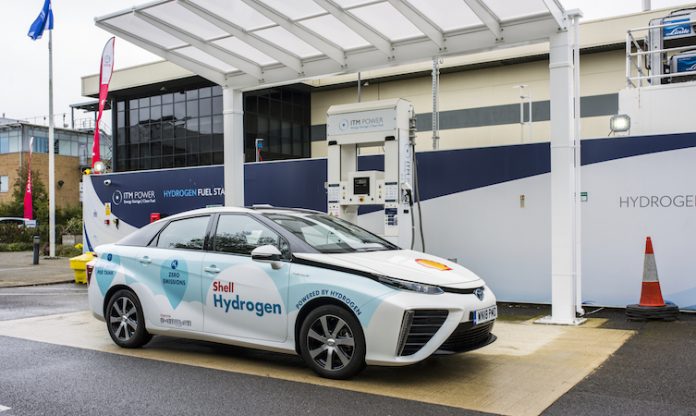
ITM Power is the world leader in design and manufacture of hydrogen energy systems and its main aim is to take excess energy from the power network and convert this into hydrogen. The company operates seven hydrogen fuelling stations in the UK, with plans to build another six this year, including one recently opened at Gatwick. It is anticipated that there will be 65 H2 fuelling stations in the UK by 2025.
Hydrogen society: drones
Loughborough-based Intelligent Energy is a leader in fuel cell engineering, producing a number of fuel cell products with outputs of up to 100kW and its hero products are hydrogen powered drones. These have an average of 70 minutes of flying time compared to 17 minutes of flying time for drones with conventional batteries. One of Intelligent Energy’s hydrogen drone clients in South Korea has even achieved the world record for drone flight of 12 hours, 7 minutes and 22 seconds.
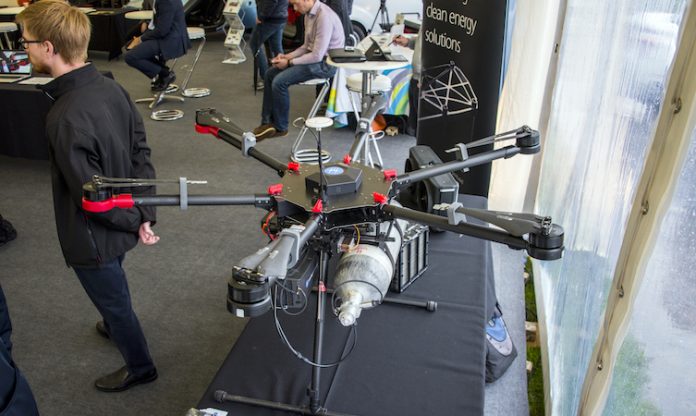
Intelligent Energy also produces other cleaner power products for the construction industry, including portable power units, like the phone chargers provided on the Hydrogen Society press event, as well as lighting towers and construction crew welfare cabins.
Hydrogen society: lighting towers
You may have noticed noisy generators or lighting systems at festivals or events, which frequently run from diesel fuel if the venue is off the electric grid. Mobile lighting towers from TCP (Taylor Construction Plant) provide an eco-friendly alternative, as the Ecolite TH200 hydrogen fuel cell off-grid lighting tower runs in virtual silence, with zero emissions.
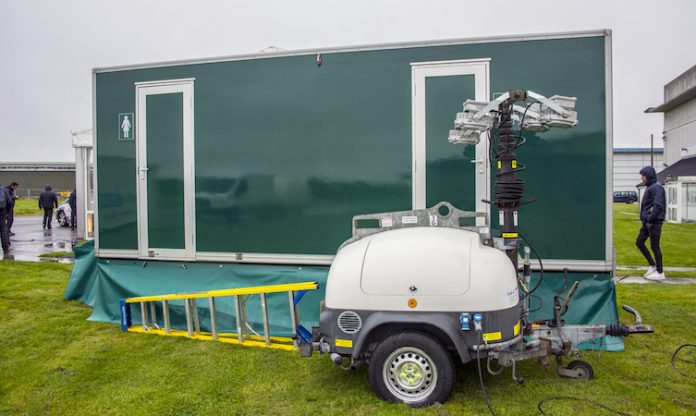
It also uses Prismatic Lens technology to prevent light pollution and unwanted glare by operating within the mesopic range on the spectrum, which produces light similar to lunar light, instead of replicating white light like many other mobile lighting units. The fuel cell lighting units have already been used at events such as the Notting Hill Carnival.
TCP has also developed a clean air alternative to a 5kW diesel generator for off-grid applications.
Hydrogen society: construction site cabins
Ecosmart ZERO is the first viable welfare alternative for companies working to reduce their carbon footprint on construction sites. The company’s award-winning welfare units provide temporary outdoor workplaces where there is no mains power or buildings available, providing shelter, toilets, hot water and heating for workers, powered by hydrogen instead of diesel, with zero emissions and no noise.

The units are fuelled by hydrogen bottles, but on sunny days up to 100% of the power demands can be met by solar panels on the roof.
Hydrogen society: fork lift trucks and buses
The hydrogen transport revolution isn’t limited to cars, as Toyota Material Handling Europe provides hydrogen-powered forklifts trucks, while Arcola Energy provides zero-emissions power trains and batteries for heavy vehicles such as buses, trucks and trains.
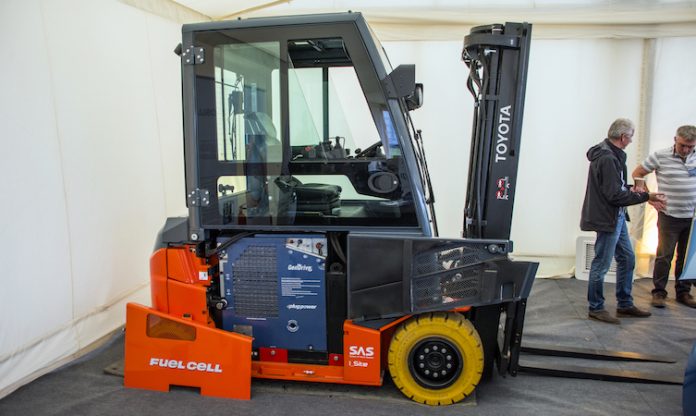
In 2020 the first fleet of 35 hydrogen-powered buses will be on the road, with 25 to be deployed in Liverpool, owing to a partnership between Arcola and Alexander Dennis bus manufacturers. Arcola believes heavy-duty busy vehicles are the ideal early market for hydrogen transport.
These vehicles are the hardest to convert to run as battery electric vehicles without trading offload capacity and range. Hydrogen energy storage provides much greater energy to weight and so fuel cell vehicles go further and can carry more within vehicle weight limits.
Hydrogen society: the hydrogen boat
The grand finale of the hydrogen society drive event was a tour of the Energy Observer hydrogen boat, which was moored at Tower Bridge in London for the final leg of its 2019 tour of Northern Europe. It has sailed 18,000 emissions-free nautical miles since leaving Saint-Malo in 2017 on a global voyage supported by Toyota.
Hydrogen society: the Mirai
The Toyota Mirai is a pioneering vehicle that will contribute to a hydrogen society. In addition to its fuel cell technology and zero-emissions performance, it is fun to drive, can be refuelled in 2-4 minutes and has a range of about 300 miles.
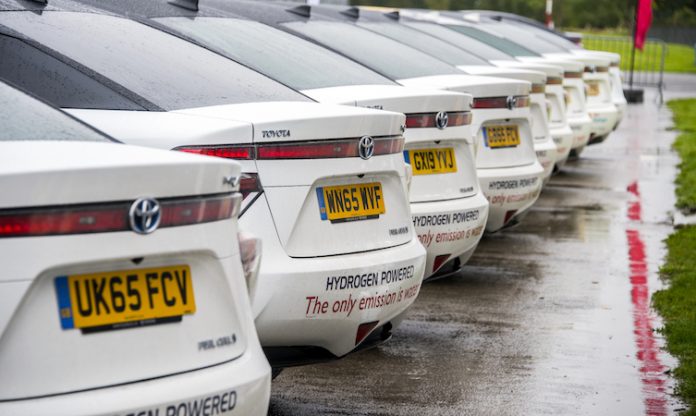
Globally Toyota has sold 9,500 Mirais so far, of which more than 600 are in Europe, including 137 in the UK. From next year Toyota aims to multiply annual production by 10,000 to 30,000 vehicles.
To date Mirai cars have been sold to a range of commercial companies wanting to champion zero-emissions transport and to reduce their carbon footprint, including Transport for London, University College London, Imperial College London, the Science Museum and the Metropolitan Police Service.
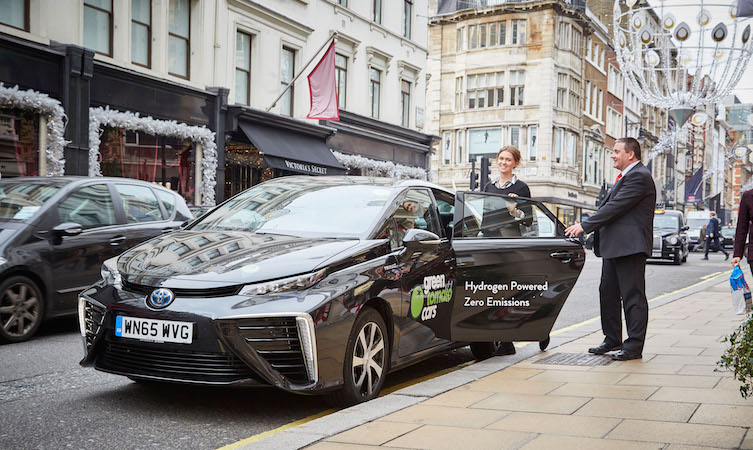
Green Tomato Cars in London has increased its fleet to 50 Mirai after the first 27 being run by the private car and taxi service completed more than one million trouble-free zero-emissions miles in and around the capital, saving 206 tonnes of CO2, with zero NOx emissions.
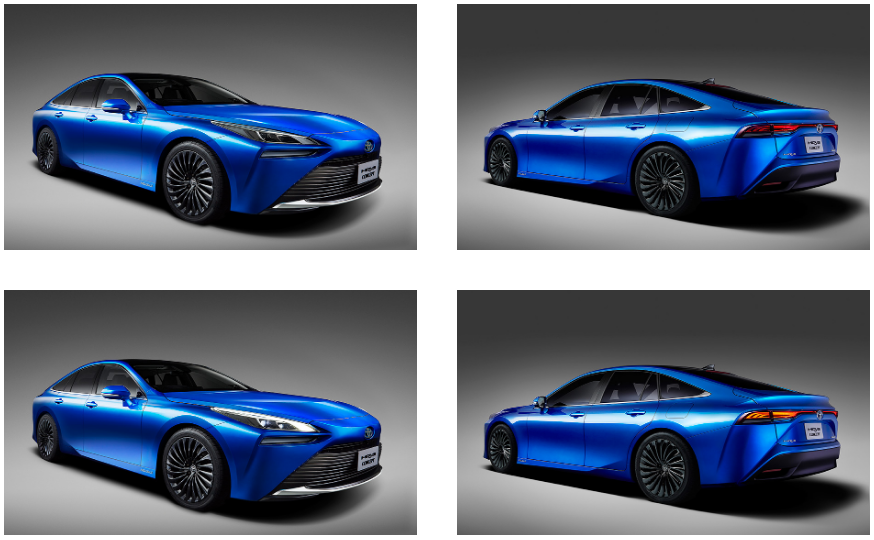
At the recent Tokyo Motor Show, Toyota gave a preview of the next-generation Mirai that will be introduced towards the end of 2020. It benefits from a Toyota New Global Architecture (TNGA) platform and improvements to its fuel cell system to achieve better dynamic performance and an increased driving range, enabling one of the goals of the Toyota Environmental Challenge to move ever closer.
Source: Toyota
Read the most up to date Fuel Cell and Hydrogen Industry news at FuelCellsWorks





